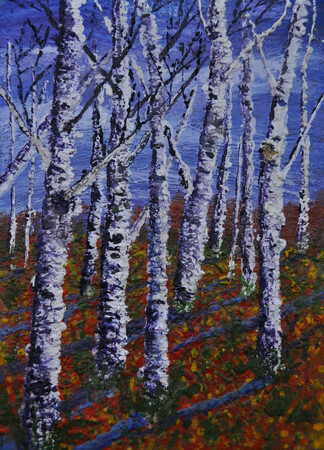| Home | | | Bio | | | Galleries | | | Artist CV | | | Prospective Purchasers | | | Events | | | Blog | | | Guestbook | | | Mailing List | | | Links | | | Contact |
|
Click image to display
|
Encaustic WorksEncaustic painting, also known as hot wax painting, involves using heated beeswax to which colored pigments are added. The liquid or paste is then applied to a surface—usually prepared wood, though canvas and other materials are often used. The simplest encaustic mixture can be made from adding pigments to beeswax, but there are several other recipes that can be used—some containing other types of waxes, damar resin, linseed oil, or other ingredients. Pure, powdered pigments can be used, though some mixtures use oil paints or other forms of pigment. Metal tools and special brushes can be used to shape the paint before it cools, or heated metal tools can be used to manipulate the wax once it has cooled onto the surface. Today, tools such as heat lamps, heat guns, and other methods of applying heat allow artists to extend the amount of time they have to work with the material. Because wax is used as the pigment binder, encaustics can be sculpted as well as painted. Other materials can be encased or collaged into the surface, or layered, using the encaustic medium to stick them to the surface. (wikipedia) Autumn Birch Stand9" x 12" Encaustic This painting is in a private collection 
Click on the image to enlarge
The sun sets on the birch stand as the air becomes crisp with the onset of autumn. |




